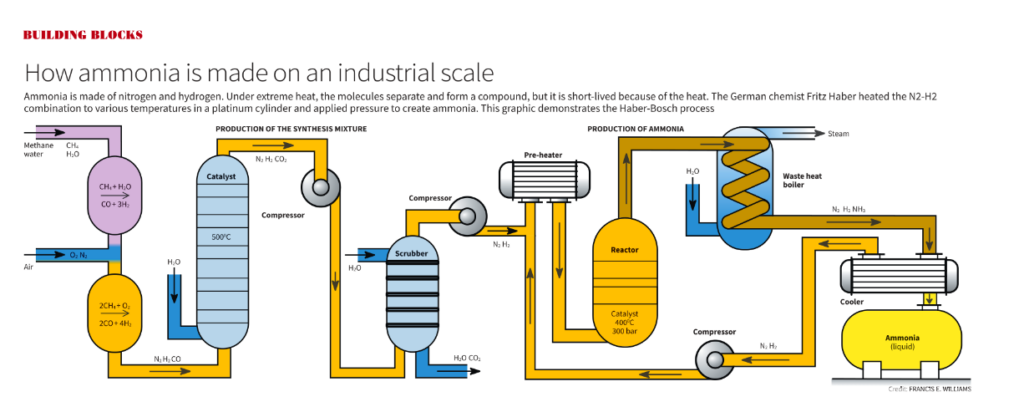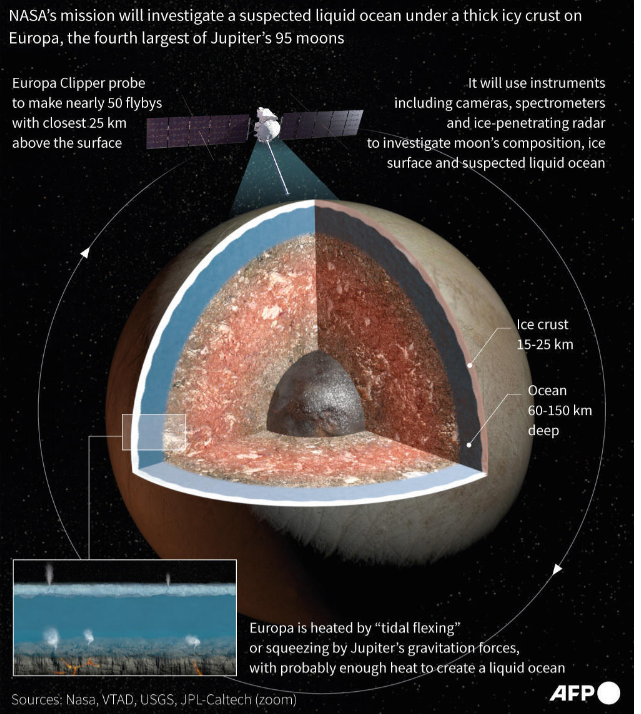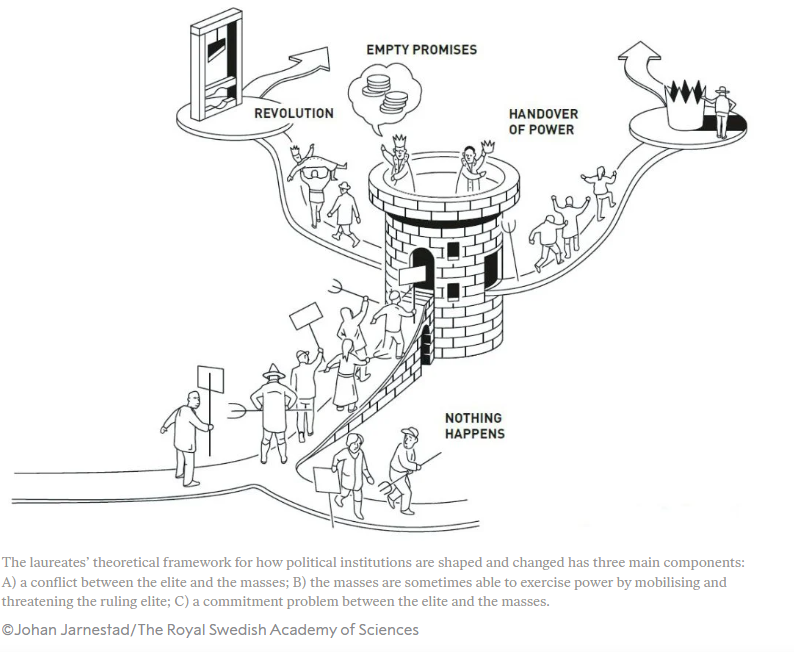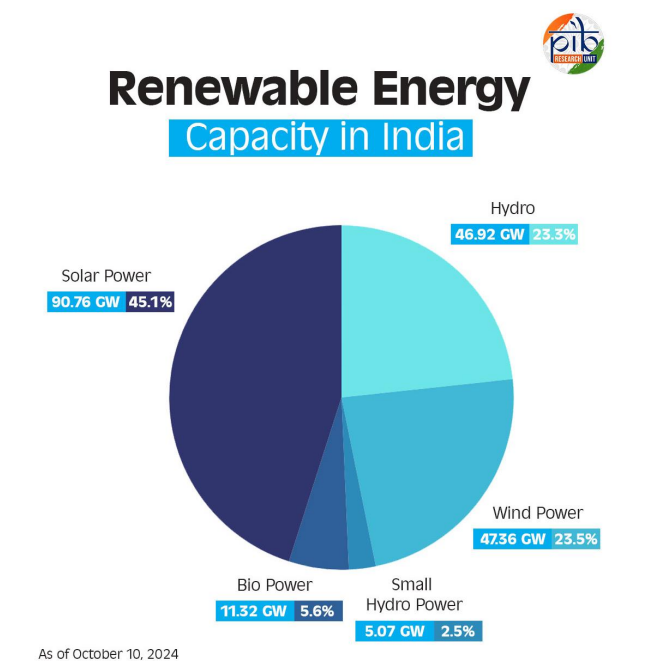15 October 2024 : Daily Current Affairs
1. India-Canada Diplomatic Row Escalates: Expulsions, Allegations, and Security Concerns Intensify Tensions
- 1. India-Canada Diplomatic Row Escalates: Expulsions, Allegations, and Security Concerns Intensify Tensions
- 2. Stubble burning on the rise in Punjab and Haryana; Delhi’s air quality dips
- 3. How did the Haber-Bosch process change the world?
- PRELIMS FACTS
- 1. New Study Reveals Immune Health and Resilience, Not Just Weight Loss, as Key to Longevity from Caloric Restriction
- 2. NASA’s Europa Clipper Embarks on Mission to Unveil Secrets of Jupiter’s Ocean Moon
- 3. Acemoglu, Johnson and Robinson share Nobel prize on Economics for work on wealth inequality
- 4. On Samsung workers’ right to unionise
- 5. Nile nations agree on water-sharing without Egypt’s nod
- 6. National Electricity Plan (Transmission) launched by Cabinet Minister for Power and Housing & Urban Affairs
- 7. HAL’s Maharatna Status: India’s Growth Towards Aerospace Industry
- 8. India’s Renewable Energy Capacity Hits 200 GW Milestone
(Source: Indian Express; Section: Cover Page; Page: 01)
| Topic: GS2 – International Relations |
| Context |
|
Analysis of News:
Context of the Row
- The diplomatic row stems from Canadian Prime Minister Justin Trudeau’s allegations in September 2023 of potential Indian government involvement in Nijjar’s killing in June 2023.
- India has consistently rejected these claims, labeling them as politically motivated and absurd.
- The latest developments, including Canada’s identification of Indian diplomats and India’s reciprocal actions, have further strained the already troubled relationship.
Indian Government’s Stand
- India has strongly condemned Canada’s actions, accusing the Trudeau government of fostering an environment that promotes extremism and separatism, particularly linked to the Khalistan movement.
- The Ministry of External Affairs (MEA) reiterated that no evidence has been provided by Canada to substantiate its claims and warned that India reserves the right to take further steps if necessary.
- It also criticized Canada’s political agenda, accusing it of vote-bank politics and pandering to extremists.
Diplomatic Implications
- The diplomatic tensions reflect a broader deterioration in India-Canada relations, exacerbated by differing views on extremism, security, and governance.
- India has expressed concerns over Canada’s failure to address anti-India activities, particularly related to the Khalistan movement, and has called for firm action against those advocating violence.
- This row could potentially affect bilateral relations in trade, diplomatic engagement, and cooperation on global platforms.
Conclusion
- The worsening of India-Canada relations is a serious diplomatic challenge, with both nations taking reciprocal actions that deepen the rift.
- The situation calls for careful diplomatic handling to avoid further escalation and maintain stability in the relationship.
| What Should be the Way Forward? |
|
Addressing Khalistan Issue: Encourage open and inclusive dialogue between all stakeholders including members of the Sikh community, Indian government representatives and Canadian officials. Both countries should take legal measures to address any political extremism. Economic Diversification: Expanding trade beyond traditional sectors to include emerging technologies, renewable energy, and healthcare can open new avenues for cooperation and economic growth. Cultural Exchange: Promoting cultural exchange programs, art exhibitions, and film festivals can foster a deeper understanding of each other’s cultures and traditions. Environmental Cooperation: Given the shared commitment to combat climate change, India and Canada can work together on green technologies, sustainable development, and renewable energy initiatives. Diplomatic Engagement: Regular high-level diplomatic dialogues and exchanges can help align their positions on global issues and promote mutual understanding. Security Cooperation: Robust cooperation on counter terrorism issues particularly through the framework of the JWG on Counter Terrorism |
| Practice Question: Examine the key issues behind the India-Canada diplomatic dispute and discuss its potential implications on bilateral relations, international diplomacy, and security concerns. What steps can be taken to de-escalate the situation? (150 words/10 m) |
2. Stubble burning on the rise in Punjab and Haryana; Delhi’s air quality dips
(Source – The Hindu, International Edition – Page No. – 6)
| Topic: GS3 –Environment – Environmental Pollution And Degradation |
| Context |
|
Increase In Stubble Burning In Northern States:
- Fire counts in Punjab, indicating stubble burning, have risen to 872 between September 15 and October 13, 2024, compared to 1,230 during the same period last year.
- This marks the lowest fire counts in five years but a sharp increase from 300 on October 7, according to data.
- Union Environment Ministry noted that while stubble burning has declined since 2020, but a spike is expected as rice harvesting progresses.
- Stubble burning in Punjab typically increases in late October and remains high until mid-November.
- Haryana has recorded 468 incidents this year, the highest since 2020.
- Uttar Pradesh has also seen the highest number of incidents in five years, with 398 cases reported so far.
- The Supreme Court criticised the Commission for Air Quality Management for not effectively controlling stubble burning.
- Delhi’s air quality was classified as ‘poor’ on Monday, leading to the implementation of Stage-1 GRAP measures.
| Stubble Burning And Pollution In Northern India |
|
Issues: Air Pollution: Stubble burning contributes to severe air pollution in northern India, particularly affecting Delhi and surrounding regions. Health Hazards: It causes respiratory issues and worsens conditions for vulnerable populations, leading to public health emergencies. Environmental Impact: Burning stubble releases harmful gases, including carbon dioxide and methane, contributing to climate change. Farmer Challenges: Farmers burn stubble due to the high cost of alternative disposal methods and short time windows between crops. Ineffective Enforcement: Despite government measures, enforcement of stubble burning bans remains weak. Way Forward: Subsidies for Alternatives: Provide financial support for eco-friendly methods like mulching, bio-decomposers, and machinery like happy seeders Incentivize Residue Sale: Encourage industries to purchase stubble for biofuel and other uses, reducing the need for burning. Strengthen Regulations: Improve monitoring and enforcement of stubble burning bans through technology and penalties. Awareness Campaigns: Educate farmers on sustainable agricultural practices and the harmful effects of burning. |
| PYQ: Mumbai, Delhi and Kolkata are the three megacities of the country but the air pollution is a much more serious problem in Delhi as compared to the other two. Why is this so? (200 words/12.5m) (UPSC CSE (M) GS-1 2015) |
| Practice Question: Examine the environmental and public health impacts of stubble burning in northern India. Discuss the challenges in curbing this practice and suggest viable solutions to address the issue sustainably (250 Words /15 marks) |
3. How did the Haber-Bosch process change the world?
(Source – The Hindu, International Edition – Page No. – 4)
| Topic: GS3 – Science and Technology |
| Context |
|
Importance of Nitrogen in Agriculture
- Each year, 100 million tonnes of nitrogen are extracted from the atmosphere and turned into fertilisers through the Haber-Bosch process, adding 165 million tonnes of reactive nitrogen to the soil.
- Natural biological processes replenish about 100-140 million tonnes of reactive nitrogen annually.
- The Haber-Bosch process is essential for meeting the growing global food demand.
Understanding Nitrogen Molecules
- Nitrogen molecules, mainly in the form of N2, are abundant in the atmosphere, with eight metric tonnes of nitrogen per square metre.
- Nitrogen atoms bond together to form a strong triple bond, making N2 nearly inert and unreactive.
- To be usable by plants, nitrogen must be converted into forms like ammonia (NH3) or nitrates (NO3–), which are crucial for plant growth.
Natural Sources of Reactive Nitrogen
- Natural events like lightning can break the N2 bond, producing nitrogen oxides that form acids and eventually enrich the soil.
- Certain bacteria, such as Azotobacter and Rhizobia, also convert nitrogen into reactive forms.
- The aquatic fern Azolla can similarly absorb and convert nitrogen, providing a natural fertiliser.
The Nitrogen Cycle
- Plants absorb reactive nitrogen from the soil, which is then consumed by humans and animals.
- Nitrogen returns to the soil through excreta and decomposition, but some is lost back into the atmosphere.
- Essential crops like rice and wheat rely on soil nitrogen, which is becoming depleted due to population growth and agricultural demands.
Ammonia Production
- Ammonia (NH3) is created from nitrogen and hydrogen under high heat and pressure.
- The reaction requires careful conditions to produce significant amounts of ammonia.
| The Haber-Bosch Process |
|

Environmental Concerns of Fertilisers
- While the Haber-Bosch process significantly increased food supply and life expectancy, it also poses environmental risks.
- Excessive nitrogen from fertilisers can harm ecosystems, contribute to acid rain, and lead to water pollution.
- While this technology is crucial, it must be combined with political action and social efforts to address food security and environmental issues.
| Practice Question: Discuss the role of the Haber-Bosch process in enhancing food security and its associated environmental challenges. How can sustainable practices be integrated into nitrogen management in agriculture? (150 Words /10 marks) |
PRELIMS FACTS
1. New Study Reveals Immune Health and Resilience, Not Just Weight Loss, as Key to Longevity from Caloric Restriction
(Source: Indian Express; Section: Explained; Page: 13)
| Context: |
|
Analysis of News:
The Study with Mice: Examining Caloric Restriction and Intermittent Fasting
- The study involved 960 genetically diverse mice subjected to various levels of caloric restriction (20% and 40%) and intermittent fasting (1 or 2 days per week).
- Results showed that both strategies caused weight loss and improved metabolic markers, such as lower body fat and blood sugar. However, weight loss did not always correlate with a longer lifespan.
Immune Health and Resilience: Key Factors for Longevity
- Surprisingly, mice that lost the most weight on calorie-limited diets tended to die younger, indicating that metabolic changes alone do not explain increased longevity.
- Instead, factors such as immune health, red blood cell function, and genetic resilience to dietary stress were more critical in determining lifespan. Animals that maintained better immune function and lost less weight lived longer.
Implications for Human Studies
- These findings highlight the complexity of how the body responds to caloric restriction and suggest that metabolic benefits alone may not predict lifespan extension.
- While previous human studies have focused on metabolic improvements as indicators of longevity, this research points to the need for broader health metrics when assessing the impact of dietary restrictions on ageing.
2. NASA’s Europa Clipper Embarks on Mission to Unveil Secrets of Jupiter’s Ocean Moon
(Source: Indian Express; Section: The World; Page: 14)
| Context: |
|
Analysis of News:

Scientific Objective
- While Europa Clipper won’t directly search for life, it will focus on finding the ingredients necessary to sustain life. It will search for organic compounds and other signs of suitable conditions for life beneath Europa’s icy crust.
Mission Timeline and Equipment
- Launch Date: The spacecraft was launched on a Falcon Heavy rocket by SpaceX from the Kennedy Space Center.
- Journey: It will take about 5.5 years to reach Jupiter by 2030, using gravity assists from Mars and Earth.
- Flybys: Clipper will make 49 flybys of Europa, sometimes flying as close as 16 miles (25 km) from the surface, gathering data on the ice thickness and ocean depth.
- Equipment: Clipper carries nine scientific instruments, and its electronics are protected by dense zinc and aluminum walls to shield against Jupiter’s intense radiation.
Challenges and Solutions
- Radiation Exposure: The spacecraft will face intense radiation, equivalent to millions of chest X-rays, during its flybys. NASA addressed concerns over vulnerable transistors, ensuring the mission could proceed.
- Launch Delay: The launch was delayed by Hurricane Milton but was ultimately successful.
Significance
- Europa is considered one of the most promising places for potential life due to its subsurface ocean.
- If Europa Clipper finds favorable conditions, it could lead to further exploration of other ocean worlds like Saturn’s moon Enceladus.
Previous Missions
- Past missions like Pioneer, Voyager, and Galileo provided preliminary data on Europa.
- The upcoming JUICE spacecraft, launched by the European Space Agency, will also explore Jupiter’s moons alongside Clipper.
3. Acemoglu, Johnson and Robinson share Nobel prize on Economics for work on wealth inequality
(Source – The Hindu, International Edition – Page No. – 1)
| Context |
|
Nobel Prize in Economics 2024:
- Research Focus: Their work explores why some nations are wealthier than others by studying political and economic systems, especially those shaped by European colonisation.

- Main Insight: They showed that societal institutions (like political and economic systems) greatly influence a country’s prosperity.

- Income Inequality: The research explains why some countries, despite getting richer, still struggle to close the income gap with wealthier nations.
- Example Used: The city of Nogales, split by the U.S.-Mexico border, where better institutions on the U.S. side lead to more opportunities and prosperity.
- Democracy and Growth: Their findings suggest that countries transitioning from non-democratic to democratic systems experience faster economic growth.
- Famous Books: Daron Acemoglu co-authored Why Nations Fail, a best-seller explaining the origins of wealth and poverty in countries.
4. On Samsung workers’ right to unionise
(Source – The Hindu, International Edition – Page No. – 10)
| Context |
|
Workers’ Rights Highlighted:
Right to Form a Union:
- Under Article 19(1)(c) of the Indian Constitution, workers have the fundamental right to form associations or trade unions.
- This right allows them to collectively voice grievances, negotiate working conditions, and protect their interests.
- However, restrictions may apply if there are concerns about public order or national security.
Right to Collective Bargaining:
- Workers can engage in collective bargaining with employers to negotiate wages, working conditions, and employment terms.
- This is recognized under the Industrial Disputes Act, 1947, which facilitates conciliation and mediation in case of negotiation failures, fostering fair and democratic work agreements.
Right to Strike:
- Workers can legally strike to protest against unfair labour practices, although it is not an absolute right.
- The Industrial Disputes Act, 1947 imposes conditions, such as notice periods and prohibitions during certain conciliation processes.
- Strikes serve as a tool for collective action to demand better rights.
Immunity from Civil and Criminal Action:
- Registered trade unions under the Trade Unions Act, 1926, are protected from civil and criminal liability.
- This immunity ensures that workers and unions are not penalised for peaceful actions taken in the pursuit of their rights, promoting fair advocacy for worker welfare.
Right to Political Expression:
- Trade unions are allowed to engage in political activities under the Trade Unions Act, 1926.
- They can set up a separate fund for civic and political purposes, which can be used to promote the interests of workers, including supporting candidates in elections or engaging in political dialogue.
5. Nile nations agree on water-sharing without Egypt’s nod
(Source – The Hindu, International Edition – Page No. – 15)
| Context |
|

Analysis of the news:
- Countries that have ratified the accord include Ethiopia, Uganda, Rwanda, Burundi, and Tanzania.
- Egypt and Sudan have not signed the agreement, while Congo abstained; Kenya has not submitted its ratification documents.
- The Nile Basin Initiative hailed the accord as a collective effort for sustainable water use, beneficial for future generations.
- Ongoing tensions are exacerbated by Ethiopia’s $4 billion dam project on the Blue Nile, raising concerns for Egypt’s water and irrigation supply.
| About Nile River |
|
Location: The Nile River is one of the longest rivers in the world, flowing approximately 6,650 kilometers (4,130 miles) through northeastern Africa. Source: It has two major tributaries: the White Nile, originating from Lake Victoria, and the Blue Nile, starting at Lake Tana in Ethiopia. Countries: The river flows through 11 countries, including Uganda, Sudan, and Egypt, before emptying into the Mediterranean Sea. Economic Importance: The Nile is crucial for agriculture, providing water for irrigation in otherwise arid regions. Environmental Concerns: Issues include pollution, dam construction, and water disputes among riparian countries. |
6. National Electricity Plan (Transmission) launched by Cabinet Minister for Power and Housing & Urban Affairs
(Source – https://pib.gov.in/PressReleseDetail.aspx?PRID=2064751®=3&lang=1 )
| Context |
|
Renewable Energy and Storage Systems:
- The plan includes 47 GW of Battery Energy Storage Systems and 31 GW of Pumped Storage Plants to complement renewable energy generation.
- Transmission systems are planned to deliver power to green hydrogen and green ammonia manufacturing hubs located in coastal areas like Mundra, Kandla, and others.
Cross-Border and Technological Advancements:
- The plan covers cross-border interconnections with Nepal, Bhutan, Myanmar, and other countries.
- New technology options include Hybrid Substations, Monopole Structures, and High-Performance Conductors.
Investment Opportunities:
- Massive investment opportunities of over INR 9,15,000 crores in the transmission sector by 2032 are highlighted.
| PYQ: Do you think India will meet 50 percent of its energy needs from renewable energy by 2030 ? Justify your answer. How will the shift of subsidies from fossil fuels to renewables help achieve the above objective? Explain. (UPSC CSE (M) GS-3 2022) |
| Practice Question: Discuss the significance of India’s National Electricity Plan (Transmission) in achieving renewable energy targets and achieving energy security. How do technological advancements in transmission contribute to India’s energy transition? (250 Words /15 marks) |
7. HAL’s Maharatna Status: India’s Growth Towards Aerospace Industry
(Source – https://pib.gov.in/PressReleseDetail.aspx?PRID=2064615®=3&lang=1 )
| Context |
|

Overview of Hindustan Aeronautics Limited (HAL):
- Founded: Established on December 23, 1940, by Walchand Hirachand in Bangalore.
- Objective: Initially focused on domestic aircraft manufacturing, it later became a key player in India’s aerospace and defence sectors.
- Ownership: Came under the Government of India in 1942, fully controlled by the Ministry of Defence from 1951.
Maharatna Status:
- Recognition: HAL became the 14th Central Public Sector Enterprise (CPSE) to attain Maharatna status.
- Significance: Maharatna status grants HAL greater financial autonomy, allowing quicker decision-making and investment.
Strategic Importance:
- Key Projects: HAL developed the Light Combat Aircraft (LCA) Tejas and Light Utility Helicopter (LUH), central to modernising the Indian Armed Forces.
- Global Partnerships: Collaborates with international aviation firms like Airbus, Boeing, and Rolls Royce for technology transfers and exports.
- Aatmanirbhar Bharat: HAL plays a key role in India’s push for self-reliance in defence production through indigenous manufacturing initiatives.
8. India’s Renewable Energy Capacity Hits 200 GW Milestone
(Source – https://pib.gov.in/PressReleseDetail.aspx?PRID=2064758®=3&lang=1 )
| Context |
|

Overview of India’s Renewable Energy Landscape
- India’s total electricity generation capacity has reached 452.69 GW, with renewable energy contributing significantly to the overall power mix.
- As of October 2024, renewable energy accounts for 46.3 percent of the country’s total installed capacity, marking a notable shift toward cleaner energy sources.
- The primary sources contributing to this figure include:
- Solar Power: Leading the way with 90.76 GW.
- Wind Power: Contributing 47.36 GW.
- Hydroelectric Power: Generating 46.92 GW from large hydro projects and an additional 5.07 GW from small hydro sources.
- Biopower: Including biomass and biogas, which adds 11.32 GW, utilising agricultural waste and organic materials to generate energy.
Leading States in Renewable Energy Capacity

- Several states in India have emerged as leaders in renewable energy capacity:
- Rajasthan: Tops the list with 29.98 GW.
- Gujarat: 29.52 GW, driven by strong solar and wind energy projects.
- Tamil Nadu: Ranks third with 23.70 GW.
- Karnataka: With 22.37 GW.
Key Schemes and Programs
- The Government of India has introduced numerous initiatives to promote renewable energy, aiming for 500 GW of installed electric capacity from non-fossil sources by 2030.
Some key programs include:

- National Green Hydrogen Mission
- PM-KUSUM
- PM Surya Ghar
- Production-Linked Incentive (PLI) schemes for solar PV modules
Other ongoing initiatives to enhance renewable energy capacity include:
- 100 percent Foreign Direct Investment permitted under the automatic route.
- Waivers for Inter-State Transmission System charges for solar and wind projects.
- Standard Bidding Guidelines for power procurement from renewable sources.
- Cabinet approval for a Viability Gap Funding scheme for offshore wind projects.
Conclusion
- These ongoing efforts demonstrate a holistic approach to building a greener economy, ensuring that India meets its energy needs while addressing climate change and resource conservation challenges.
| PYQ: Give an account of the current status and the targets to be achieved pertaining to renewable energy sources in the country. Discuss in brief the importance of the National Programme on Light Emitting Diodes (LEDs). (200 words/12.5m) (UPSC CSE (M) GS-3 2016) |
| Practice Question: Discuss the significance of India’s achievement of over 200 GW in renewable energy capacity. How does this milestone contribute to the country’s energy security and environmental sustainability?(250 Words /15 marks) |

